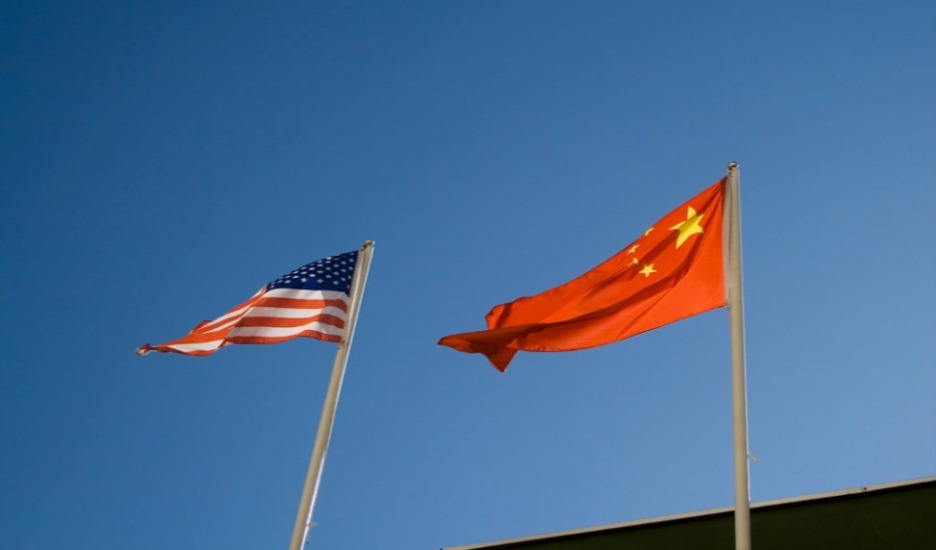Vietnam, the UNCLOS Tribunal, and the Latest U.S. FONOP in the South China Sea
Last Friday, on the heels of Philippine President Rodrigo Duterte declaring his “separation from the United States” during a visit to China, the USS Decatur conducted a freedom of navigation operation (FONOP) in the vicinity of the Paracel Islands in the South China Sea. Julian Ku has written about this operation here.
Published by The Lawfare Institute
in Cooperation With

Last Friday, on the heels of Philippine President Rodrigo Duterte declaring his “separation from the United States” during a visit to China, the USS Decatur conducted a freedom of navigation operation (FONOP) in the vicinity of the Paracel Islands in the South China Sea. Julian Ku has written about this operation here. The Paracels are currently occupied by China and also claimed by Vietnam and Taiwan (though not the Philippines). As Julian describes, the apparent purpose of the U.S. FONOP was to challenge China’s “straight baselines” around the entire Paracel Islands group, which China publicly declared in 1996 and the legality of which the United States has long contested.
 Reuters and the Navy Times cite anonymous U.S. officials who say that the ship did not patrol within 12 nautical miles of any of the Paracel Island features. It did, however, sail into waters China claims as its territorial seas. A statement from the Chinese Foreign Ministry denounced the action as “illegal” and “provocative,” and asserted that the U.S. had not asked for permission to enter China’s “territorial waters.” A Pentagon spokesman said the Decatur had “conducted this transit in a routine, lawful manner without ship escorts and without incident…specifically in the vicinity of the Paracel Islands, to uphold the rights and freedoms of all States under international law, as reflected in the Law of the Sea Convention.”
Reuters and the Navy Times cite anonymous U.S. officials who say that the ship did not patrol within 12 nautical miles of any of the Paracel Island features. It did, however, sail into waters China claims as its territorial seas. A statement from the Chinese Foreign Ministry denounced the action as “illegal” and “provocative,” and asserted that the U.S. had not asked for permission to enter China’s “territorial waters.” A Pentagon spokesman said the Decatur had “conducted this transit in a routine, lawful manner without ship escorts and without incident…specifically in the vicinity of the Paracel Islands, to uphold the rights and freedoms of all States under international law, as reflected in the Law of the Sea Convention.”
Based on these accounts, as Julian explained, the U.S. FONOP presumably did not follow the rules of “innocent passage” through a country’s territorial sea. This is because the United States objects to the notion that the waters it transited are in fact territorial seas under international law, as established in the United Nations Convention on the Law of the Sea (UNCLOS).
To understand the implications of this mission, it is worth stepping back to consider the diplomatic and legal context.
At present, the leader of the Philippines, a U.S. ally in Southeast Asia, is rhetorically distancing himself from the United States and seeking a closer relationship with China. Just a few months ago, the Philippines scored a resounding victory in an UNCLOS arbitration brought by President Duterte’s predecessor that challenged various Chinese claims and activities in the South China Sea, particularly around the disputed Spratly Islands and Scarborough Shoal. More recently, Duterte has signaled a new approach—declaring before his meeting last week with Chinese President Xi Jinping that the arbitration ruling would take a “back seat” in their discussions. In announcing his “realignment” with China, Duterte told his Beijing audience that “America has lost” (remarks that have since been walked back to some extent).
At the very moment the Philippines appears to be pivoting away from Washington, Vietnam is inching closer. On October 17, four days before the FONOP, Vietnam’s vice defense minister met with the U.S. Deputy Assistant Secretary of Defense for South and Southeast Asia and “affirmed that Vietnam will support the U.S and other partners to intervene in the region as long as it brings peace, stability and prosperity.” Thus, the FONOP may be viewed as a measure of reassurance to Vietnam, which contests China’s claim to the Paracel Islands and did not object to a U.S. FONOP earlier this year asserting innocent passage rights in the Paracels. Although it is unclear from initial media reports whether and to what extent the U.S. may have coordinated with Vietnam prior to conducting Friday’s FONOP, it would certainly bolster the policy case for the operation if the U.S. had Vietnam’s support.
The legal backdrop for the operation is also worth examining. The last known U.S. FONOP in the South China Sea was conducted in May, two months before the UNCLOS Tribunal issued its landmark ruling in the Philippines v. China arbitration. On its face, the Tribunal’s decision had nothing to do with the Paracel Islands. But a close reading reveals that the decision may have strengthened the legal foundation for Friday’s Paracel Islands operation.
In 1996, China declared “straight baselines” that connect 28 basepoints enclosing the entire group of features that comprise the Paracel Islands. UNCLOS distinguishes between coastal states drawing “normal baselines” and drawing “straight baselines” from which to establish the state’s 12-nautical mile territorial sea. Normal baselines are drawn along the low-water line of the coast, whereas straight baselines connect “appropriate points” that follow the general direction of the coast.
UNCLOS provides, in effect, three grounds for drawing straight baselines instead of using normal baselines.
The first two grounds are found in Article 7 of UNCLOS. A state may draw straight baselines “[1] where the coastline is deeply indented and cut into, or [2] if there is a fringe of islands along the coast in its immediate vicinity.” The third method applies to “archipelagic states”—that is, states “constituted wholly” by one or more groups of islands and interconnecting waters that form an “intrinsic geographical, political, and economic entity.” Under Article 47, archipelagic states “may draw straight archipelagic baselines joining the outermost points of the outermost islands and drying reefs of the archipelago provided that within such baselines are included the main islands and an area in which the ratio of the area of the water to the area of the land, including atolls, is between 1 to 1 and 9 to 1.” In other words, an archipelagic state may draw baselines in the manner China has done in the Paracel Islands if the water-to-land ratio in the relevant area is between 1:1 and 9:1.
In Philippines v. China, the Tribunal examined China’s argument that it is entitled to a territorial sea, exclusive economic zone, and continental shelf “based on the [Spratly] Islands as a whole” (emphasis mine). China has asserted this in multiple fora, including a 2014 Position Paper responding to the Philippines’ claims, as well as in public statements sent to the Tribunal and a 2011 Note Verbale to the UN. The Tribunal reasoned that one plausible interpretation of this claim is that the Spratly Islands as a single unit should be enclosed within a system of archipelagic or straight baselines.
The Tribunal unambiguously rejected this possibility. First, it said, China is not an archipelagic state. Even if it were, no state can draw archipelagic baselines around the Spratly Islands because doing so would “greatly exceed” the aforementioned 9:1 ratio of water to land within the baselines. This same logic applies to the Paracels, where the water-to-land ratio is “far less” than what would be required to draw archipelagic baselines. (That’s if China were an archipelagic state.)
Turning to Article 7, the Tribunal found that the conditions for drawing straight baselines—having a “deeply indented coastline” or a “fringe of islands” in the “immediate vicinity” of a state’s coast—are not present in the situation of an offshore grouping of islands such as the Spratlys. Since the Paracel Islands are similarly offshore rather than in the “immediate vicinity” of China’s coast, the Tribunal’s Article 7 rationale would seem to apply to the Paracels as well.
Importantly, however, the Tribunal noted “the practice of some States in employing straight baselines with respect to offshore archipelagos to approximate the effect of archipelagic baselines.” There is some ambiguity surrounding this practice because UNCLOS does not expressly preclude drawing straight baselines in a manner other than those it specifically authorizes. Nevertheless, the Tribunal reasoned that allowing this practice would render meaningless UNCLOS’s conditions for baseline drawing. More precisely, the conditions in Article 7 for drawing straight baselines, in conjunction with the conditions in Article 47 for drawing archipelagic baselines, “exclude[] the possibility of employing straight baselines in other circumstances, in particular with respect to offshore archipelagos not meeting the criteria for archipelagic baselines. Any other interpretation would effectively render the conditions in Articles 7 and 47 meaningless.” Moreover, the Tribunal said, the fact that some states have engaged in this practice contrary to UNCLOS does not give rise to a rule of customary international law that trumps UNCLOS. The Tribunal thus dismissed the theory that straight baseline drawing which is not expressly prohibited may be permitted.
In short, the Tribunal deemed it unlawful to draw straight baselines around the Spratlys as a single unit. Friday’s FONOP may reflect the United States’ effort to extend the same reasoning to the Paracels. If the Spratly Islands are not eligible for enclosure within straight baselines because they are an offshore archipelago that does not meet the criteria for archipelagic baselines, then the Paracel Islands (as a unit) similarly cannot be enclosed within straight baselines.
The net result is the affirmation of the legal argument the United States has asserted since China declared straight baselines around the Paracel Islands in 1996. This is the legal position Friday’s FONOP apparently sought to reinforce.
If this reading is correct, it may be further evidence of the consequences of China’s decision not to participate directly in the Philippines arbitration. By not showing up, China may have missed an opportunity to shape and narrow the issues more precisely than it did in its public statements. This opened the door for the UNCLOS Tribunal to consider various conceivable interpretations of such statements, and to rule accordingly. Which in turn created a “precedent” with implications that go beyond the specifics of the Philippines case.
One might also reasonably ask the U.S. government (as long as it’s publicly discussing this FONOP) for a bit more elaboration. As the Tribunal implied, China is not the only state that has drawn straight baselines around outlying island groups. The White House’s assertion that China should not view the Paracel FONOP as “provocative” would be strengthened if it could point to similar U.S. FONOPs that apply the Tribunal’s reasoning vis-à-vis other nations, particularly when it comes to the kind of straight baseline drawing that the Tribunal judged would be unlawful in the Spratlys. How important is it, after all, to make this particular legal point?


.jpg?sfvrsn=5a43131e_9)


